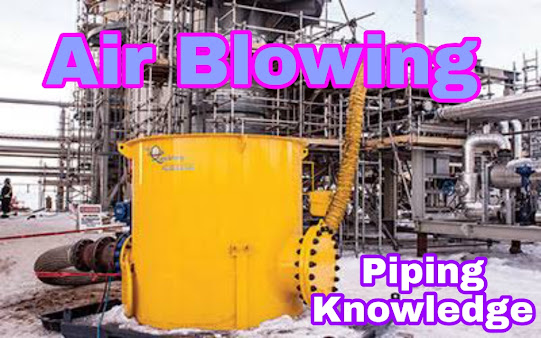Basic Knowledge of Piping Supervisor part -1.
Piping supervisor Basic Guide
A piping supervisor works in the oil and gas industry to manage the installation and maintenance of pipelines. This technical work requires good communication and coordination skills in addition to an understanding of the engineering involved in pipeline development.
- CHECK LIST FOR ISOMETRICS.
- DOCUMENTS FOR ISOMETRICS CHECKING.
- POINTS TO REMEMBERS IN BEFORE ISOMETRICS CHECKING.
- TYPES OF CONTROL VALVE
- TYPES OF PUMPS
- TYPES OF EXCHANGER
- TYPES OF COMPRESSOR
- TYPES OF TOWER
- TYPES OF VALVE
- TYPE OF FLANGES
- PRESSURE TEMPERATURE RATTING
- FLANGES FACING
- TYPES OF FITTINGS
- TYPES OF OLETS
- TYPES OF REDUCER
- TYPES OF INSTRUMENTS
- GENERAL PURPOSE OF VALVE.
Piping isometric is a representation of a single pipe line in a process plant with exact dimensions and Bill of Material (BOM).
It is the most important deliverable of any project where piping plays a vital role.
Isometric drawings are commonly used in technical drawing to show an item in 3D on a 2D page.
Isometric drawings, sometimes called isometric projections, are a good way of showing measurements and how components fit together.
- Line Nos.
- Line Specs
- Start Point Location
- End Point Location
- Branch Connection
- Valve Accecibility
- Support
- Insulation (For Insulated Line Only)
- Instrument Connection
- Flow Arrow
- High Point Vent, Low Point Drain
- Hydro Test Vent And Drain
- Nozzle Connection
- Nozzle Nos.
- Equipment Nos.
- Coordinates And Elevations
- Iso North
- Bill Of Material
- Valve Tag Nos.
- Valve Handle Orientation.
- Instruments Tag Nos.
- Continuations Sheets Or Iso. Nos.
- Grid Location And Nos.
- Piping And Instrument Diagrame.
- Piping Layouts
- Sectional Drawings
- Equipment Drawings
- Nozzle Orientations
- Piping Specification
- Supports Standard
- Special Items Drawings
- Stress Analysis Report.
- Pump Suction Is Bigger Than Discharge Line.
- Eccentric Reducer (Flat Side Top) Using For Pump Suction Line This Is Using For Avoid The Air Block In Pump Suction.
- Pump Suction Line And Compresser Suction Line Keep Always Downword Position, No Loops Permitted To Pump Suction.
- Psv Outlet Always Rising Position.
- Check The Valve Accesibility For Maitainance Purpose. Valve Operating Height Min 250mm To 1200mm From Floor Level.
- Lift Check Valve Always Horizontally Using. Swing Check Valve Verticaly And Horiontaly Using.
- Control Station Operating Height 500mm To 750mm From Floor Level.
- Shoe Not Required For Trunion. (Insulated Lines)
- Headroom Clearance Minimum 2.2m From Ground/Floor Level.
- Drip leg Required For Steam Line Header.
- Shoe Required For Insulated Lines (Steam ,Chilled Water,Brine,Steam Condansate).
- Shoe Not Required For Condansate Line When Line Will Be On Pipe Rack.
- Nozzle Orientations Should Be Keep As Per Piping Requirement.
- Avoid The Obstacles. Keep A Piping Routing Neat And Clearly.
- Control Stations Locates Side Of Near The Walls Or Columns
- Give A Trunion Supports To Control Station Both Side Of Control Valves.
- Use A Dike Wall Around The Equipments For Avoid The Liquid To Spread In The Plant Area. The Volume Of Dike Wall Is 1.5 Times More Than Total Capacity Of Equipments.
- Use Weldneck Flange For Pressure Piping.
4.TYPES OF CONTROL VALVE
- Pcv - Pressure control Valve
- Tcv - Temperature Control Valve
- Fcv - Flow Control Valve
- Lcv - Level Control Valve
- Xv - Isolation Valve
- Xcv - High Pressure Control Valve
5.TYPES OF PUMPS
- Reciprocating Pump
- Rotary Pump
- Centrifugal Pump
- Vacuum Pump
- Metering Pump
6. TYPES OF EXCHANGER
- Air Cooler Exchanger
- Plate Type Exchanger
- Shell & Tube Exchanger
- 2 Pipe Exchanger
- Spiral Exchanger
7. TYPES OF COMPRESSOR
- Elevated Centrifugal Compressor.
- Grade-Mounted Centrifugal Compressor.
- Reciprocating Compressor.
8. TYPES OF TOWER
- Tray Tower
- Packed Tower
- Vaccume Tower
9. TYPES OF VALVE
- Gate Valve
- Globe Valve
- Check Valve (Non Return Valve)
- Ball Valve
- Butterfly Valve
- Diaframe Valve
- Plug Valve
10. TYPE OF FLANGES
- Weldneck Flange (Flat Face,Race Face)
- Slipon Flange Do
- Lap Joint Flange (Flat Face)
- Reducing Flange (Flat Face,Race Face)
- Screwed Flange
- Blind Flange
- Socket weld Flange
11. PRESSURE TEMPERATURE RATTING OF FLANGES.
- 150#
- 300#
- 400#
- 600#
- 900#
- 1500#
- 2500#.
12. TYPES OF FLANGES ON THE FACING
- Ff - Flat Face
- Rf - Raise Face
- T/G - Tongue And Groove Face
- M/F - Male And Female Faces
- RTJ - Ring Type Joint Faces
1. Elbows
2.180° Returns:
3. Tees
4. Cross
5. Caps
6. Reducer
7. Stub ends
8. Couplings
9. Swage Nipple
10. Union
11. Special Fittings
14. TYPES OF OLETS
- Laterolet
- Elbowlet
- Weldolet
- Sockolet
- Threadolet
- Sweepolet
- Nippolet
- Eccentric Reducer (Butt Welded)
- Concentric Reducer (Butt Welded)
- Swages (Socket Weld, Threaded)
- Psv - Pressure Safety Valve
- Lg - Level Guage
- Li - Level Indicator
- Pg - Pressure Guage
- Pi - Pressure Indicator
- Cv - Control Valve
- Ti - Temperature Indicator
- Tw - Thermowell
- Fe - Flow Elements
- Fi - Flow Indicators
- Fo - Flow Orifice Flanges
- Control Valves (Globe, Ball, Butterfly)
- On/Off Valves (Ball, Butterfly)
- Relief Valves (Pressure, Thermal)
- Rapture Disc
- Restriction Orifice




Comments
Post a Comment